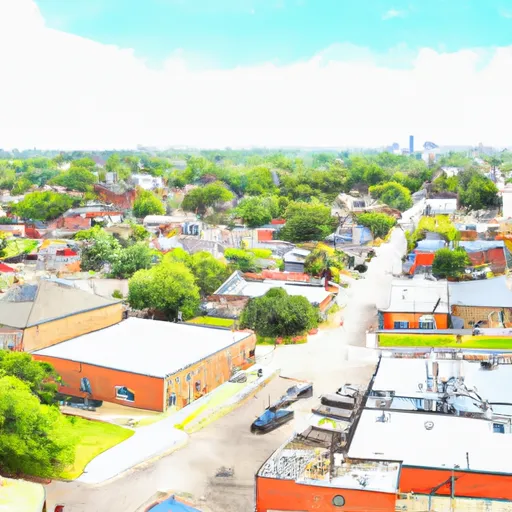-
 Snoflo Premium
Snoflo Premium
Get unlimited access to all our content
With no Ad interruptions! - Start Your Free Trial Login with existing account
Springtown
Eden Index
Climate
9.7
•
Recreation
2.8
•
Community
3.1
•
Safeguard
5.7/10

Springtown is a small city located in Parker County, Texas. The climate in Springtown is characterized by hot summers and mild winters. Summers are typically hot and humid, with temperatures reaching the high 90s°F (35°C), while winters are cool and dry, with temperatures averaging in the mid-50s°F (10-15°C). The area experiences moderate rainfall throughout the year.
Springtown is situated near several hydrological constituents, including the Brazos River, which flows to the east of the city. Additionally, there are several creeks and small reservoirs in the vicinity, providing opportunities for fishing, boating, and other water-based activities.
Outdoor recreation enthusiasts can enjoy various activities in and around Springtown. The city has multiple parks and green spaces, offering facilities for picnicking, walking, and playing sports. For nature lovers, the nearby Eagle Mountain Lake and Lake Weatherford provide opportunities for fishing, boating, and swimming. Hiking and camping enthusiasts can explore the nearby Lake Mineral Wells State Park, which offers scenic trails, rock climbing, and camping facilities.
In conclusion, Springtown, Texas, boasts a climate with hot summers and mild winters, with various hydrological constituents and outdoor recreation opportunities, making it an attractive destination for nature lovers and outdoor enthusiasts.
What is the Eden Index?
The Snoflo Eden Index serves as a comprehensive rating system for regions, evaluating their desirability through a holistic assessment of climate health, outdoor recreation opportunities, and natural disaster risk, acknowledging the profound impact of these factors on livability and well-being.
Climate Health Indicator (CHI): 9.7
Springtown receives approximately
889mm of rain per year,
with humidity levels near 78%
and air temperatures averaging around
18°C.
Springtown has a plant hardyness factor of
8, meaning
plants and agriculture in this region tend to thrive here all year round.
By considering the ideal temperature range, reliable water supplies, clean air, and stable seasonal rain or snowpacks, the Climate Health Indicator (CHI) underscores the significance of a healthy climate as the foundation for quality living.
A healthy climate is paramount for ensuring a high quality of life and livability in a region, fostering both physical well-being and environmental harmony. This can be characterized by ideal temperatures, reliable access to water supplies, clean air, and consistent seasonal rain or snowpacks.
Weather Forecast
Streamflow Conditions
Upper Trinity
Area Rivers
Upper Trinity
Snowpack Depths
Upper Trinity
Reservoir Storage Capacity
Upper Trinity
Groundwater Levels
Recreational Opportunity Index (ROI): 2.8
The Recreational Opportunity Index (ROI) recognizes the value of outdoor recreational options, such as parks, hiking trails, camping sites, and fishing spots, while acknowledging that climate plays a pivotal role in ensuring the comfort and consistency of these experiences.
Access to outdoor recreational opportunities, encompassing activities such as parks, hiking, camping, and fishing, is crucial for overall well-being, and the climate plays a pivotal role in enabling and enhancing these experiences, ensuring that individuals can engage in nature-based activities comfortably and consistently.
Camping Areas
| Campground | Campsites | Reservations | Toilets | Showers | Elevation |
|---|---|---|---|---|---|
| Faunt Leroy City Park | 11 | 750 ft | |||
| Hunter Park - Lake Granbury | None | 699 ft | |||
| Black Creek Lake | 24 | 947 ft | |||
| Pelham City Park | 10 | 1,098 ft | |||
| Wise County Park | 24 | 894 ft | |||
| Selma City Park - Lake Amon Carter | 21 | 920 ft | |||
| Meridian State Park | 15 | 1,010 ft | |||
| Dinosaur Valley State Park | 46 | 710 ft | |||
| Thorp Spring - Lake Granbury | None | 698 ft | |||
| Tadra Point | 23 | 918 ft |
Nearby Ski Areas
Catastrophe Safeguard Index (CSI):
The Catastrophe Safeguard Index (CSI) recognizes that natural disaster risk, encompassing floods, fires, hurricanes, and tornadoes, can drastically affect safety and the overall appeal of an area.
The level of natural disaster risk in a region significantly affects safety and the overall livability, with climate change amplifying these risks by potentially increasing the frequency and intensity of events like floods, fires, hurricanes, and tornadoes, thereby posing substantial challenges to community resilience and well-being.
Community Resilience Indicator (CRI): 3.1
The Community Resilience Indicator (CRI) recognizes that education, healthcare, and socioeconomics are crucial to the well-being of a region. The CRI acknowledges the profound impact of these elements on residents' overall quality of life. By evaluating educational resources, healthcare accessibility, and economic inclusivity, the index captures the essential aspects that contribute to a thriving community, fostering resident satisfaction, equity, and social cohesion.

